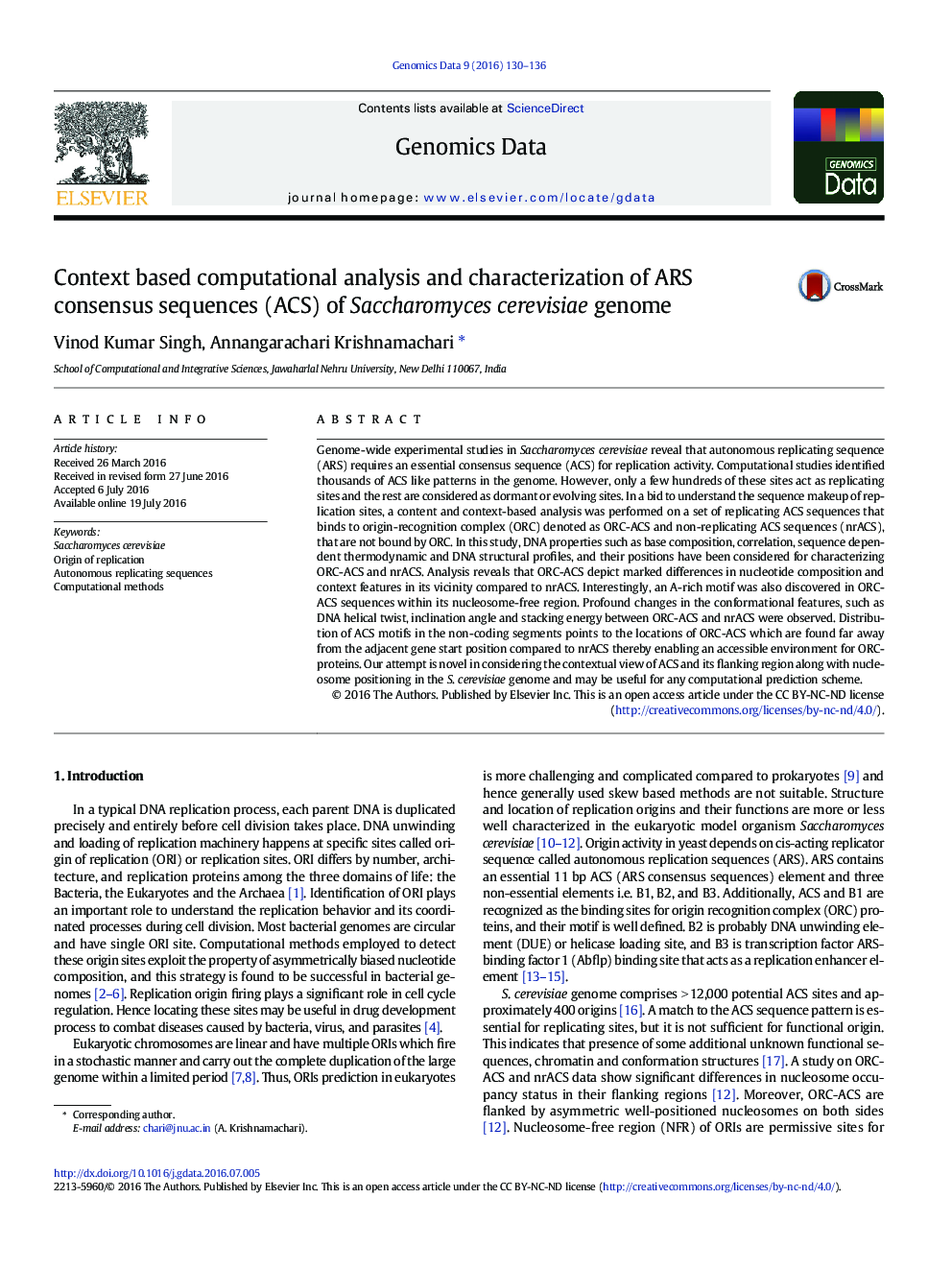| Article ID | Journal | Published Year | Pages | File Type |
|---|---|---|---|---|
| 2821949 | Genomics Data | 2016 | 7 Pages |
Abstract
Genome-wide experimental studies in Saccharomyces cerevisiae reveal that autonomous replicating sequence (ARS) requires an essential consensus sequence (ACS) for replication activity. Computational studies identified thousands of ACS like patterns in the genome. However, only a few hundreds of these sites act as replicating sites and the rest are considered as dormant or evolving sites. In a bid to understand the sequence makeup of replication sites, a content and context-based analysis was performed on a set of replicating ACS sequences that binds to origin-recognition complex (ORC) denoted as ORC-ACS and non-replicating ACS sequences (nrACS), that are not bound by ORC. In this study, DNA properties such as base composition, correlation, sequence dependent thermodynamic and DNA structural profiles, and their positions have been considered for characterizing ORC-ACS and nrACS. Analysis reveals that ORC-ACS depict marked differences in nucleotide composition and context features in its vicinity compared to nrACS. Interestingly, an A-rich motif was also discovered in ORC-ACS sequences within its nucleosome-free region. Profound changes in the conformational features, such as DNA helical twist, inclination angle and stacking energy between ORC-ACS and nrACS were observed. Distribution of ACS motifs in the non-coding segments points to the locations of ORC-ACS which are found far away from the adjacent gene start position compared to nrACS thereby enabling an accessible environment for ORC-proteins. Our attempt is novel in considering the contextual view of ACS and its flanking region along with nucleosome positioning in the S. cerevisiae genome and may be useful for any computational prediction scheme.
Related Topics
Life Sciences
Biochemistry, Genetics and Molecular Biology
Genetics
Authors
Vinod Kumar Singh, Annangarachari Krishnamachari,
